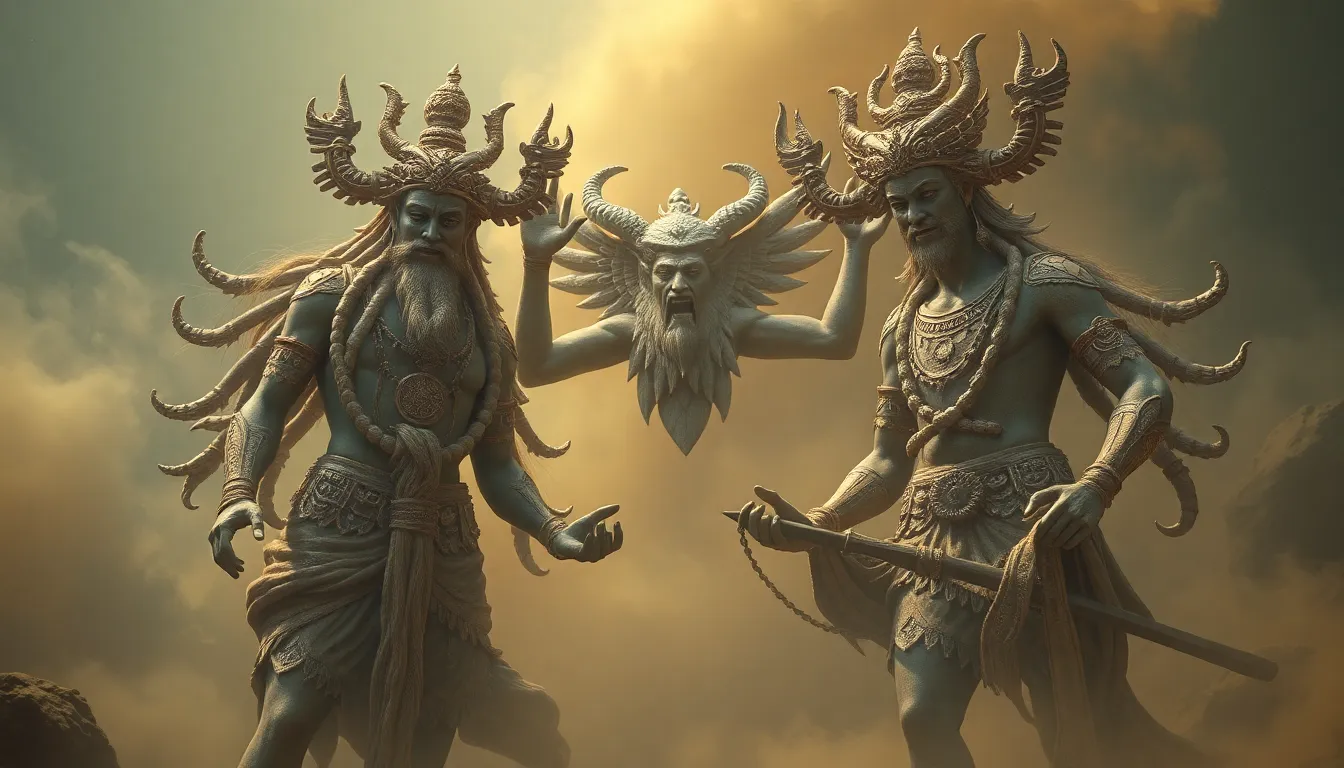The Underworld: Myths That Challenge Our Understanding of the Soul
Introduction to the Concept of the Underworld
The Underworld is a concept that permeates various cultures and religions, serving as a realm associated with the dead. While definitions can vary significantly, the Underworld is generally understood as a place where souls go after death. This idea is not merely a reflection of fears surrounding mortality but also a profound exploration of the soul’s nature and destiny.
In mythology and religion, the Underworld holds immense significance. It is often depicted as a shadowy realm, a contrasting state of existence to the living world. The connection between the Underworld and the concept of the soul is pivotal; it raises questions about what happens after death and how the soul is perceived across different cultures.
Historical Perspectives on the Underworld
Throughout history, ancient civilizations have constructed intricate beliefs regarding the afterlife, offering insights into their views on mortality and existence. From the Mesopotamians to the Egyptians and Greeks, these cultures presented unique narratives that shaped the understanding of the Underworld.
- Mesopotamia: The Sumerians and Akkadians believed in a dreary Underworld, known as Kur, where all souls went regardless of their earthly deeds.
- Ancient Egypt: The Egyptians envisioned a detailed afterlife journey, with the Duat playing a crucial role in the soul’s journey to immortality.
- Greece: Greek mythology introduced Hades as the designated realm for the dead, rich with moral implications and complex stories.
As time progressed, the concept of the Underworld evolved, influenced by philosophical, religious, and cultural transformations. These perspectives laid the groundwork for contemporary beliefs about the soul and its fate after death.
The Underworld in Greek Mythology
In Greek mythology, the Underworld is primarily represented by Hades, ruled by the god of the same name. Hades is a complex realm where souls are judged and assigned to different areas based on their earthly lives. Key figures in this mythology include:
- Charon: The ferryman who transports souls across the River Styx.
- Cerberus: The three-headed dog that guards the gates of Hades, ensuring that no soul escapes.
- Minos: One of the judges of the dead who decides the fate of souls.
The moral implications of the Greek Underworld are profound. The concept of judgment reflects the belief in accountability for one’s actions, influencing the moral framework of ancient Greek society.
The Afterlife in Ancient Egyptian Beliefs
In Ancient Egypt, the Underworld is known as the Duat, a realm filled with both wonder and danger. The journey through the Duat was essential for the soul’s transformation into the afterlife. One of the most significant events in this journey was the Weighing of the Heart ceremony, where the deceased’s heart was weighed against the feather of Ma’at, the goddess of truth and justice.
If the heart was heavier than the feather, it indicated a life of wrongdoing, leading to the soul’s destruction by the devourer Ammit. Conversely, a lighter heart signified a virtuous life, allowing the soul to proceed to eternal paradise.
The Egyptians held a strong belief in immortality, viewing the afterlife as a continuation of life on earth. Rituals, tombs, and elaborate burial practices underscored the importance they placed on ensuring a successful journey to the afterlife.
The Underworld in Eastern Philosophies
In Eastern philosophies such as Hinduism and Buddhism, the concept of the Underworld takes on different meanings, intertwining with beliefs about rebirth and karma. In these traditions:
- Hinduism: The Underworld, or Naraka, is not a permanent abode but rather a temporary stage in the cycle of samsara (rebirth). The soul’s actions in life determine its fate in the afterlife.
- Buddhism: Similar to Hindu beliefs, the Underworld is part of a continuous cycle of birth, death, and rebirth, influenced by karma. The ultimate goal is to attain enlightenment and escape the cycle entirely.
These beliefs shape a unique understanding of the soul, emphasizing the interconnectedness of actions, consequences, and the journey of existence.
Norse Mythology and Its Unique Underworld
Norse mythology presents a distinct view of the Underworld, primarily through realms like Hel and Valhalla. In this tradition, the afterlife is determined by how one lived:
- Hel: A realm for those who did not die a heroic death, ruled by the goddess Hel. It is a place of cold and darkness.
- Valhalla: The hall of the slain, where warriors who died bravely in battle are welcomed by Odin, destined to feast and fight until Ragnarok.
The warrior’s journey in Norse beliefs emphasizes the importance of honor in life. The fate of the soul is intricately linked to the choices made during one’s lifetime, reflecting the culture’s values on bravery and valor.
The Role of the Underworld in Modern Spirituality
In contemporary spirituality, interpretations of Underworld myths have shifted, often viewed through psychological lenses. The Underworld can represent a metaphorical space for introspection and personal transformation. Many modern practices involve:
- Exploring the subconscious through dreams and meditation.
- Engaging with the idea of death as a transformative experience rather than an end.
- Utilizing mythological narratives for personal growth and understanding.
These interpretations allow for a more nuanced understanding of death and the soul, fostering a deeper connection between the individual and the universal themes of existence.
Myths That Challenge Conventional Understandings of the Soul
Various myths present the soul as a complex and multi-faceted entity, challenging traditional views. For instance:
- Some narratives depict the soul as composed of multiple parts, such as the Egyptian concept of the Ba and Ka.
- Philosophical discussions on dualism and monism explore the distinctions between body and soul, influencing modern thought.
These myths and philosophies provide alternative views on existence, identity, and the nature of the soul, encouraging deeper reflection on what it means to be human.
Comparative Analysis: Underworld Myths Across Cultures
A comparative analysis of Underworld myths reveals both similarities and differences across cultures, highlighting universal themes such as:
- Judgment: Many cultures have some form of assessment of the soul’s deeds.
- Redemption: The potential for transformation or forgiveness is often present.
- Transformation: The Underworld serves as a space for change and rebirth.
These insights underscore the shared human experience of grappling with mortality and the afterlife, illustrating how diverse cultures approach the concept of the soul.
Conclusion: The Underworld’s Legacy in Shaping Soul Beliefs
The Underworld, across various cultures and mythologies, has played a critical role in shaping beliefs about the soul. From ancient civilizations to modern spiritual practices, the narratives surrounding the Underworld provide a rich tapestry of understanding about life, death, and the journey of the soul. These myths challenge us to reflect on our beliefs and the nature of existence itself, ensuring that the legacy of the Underworld remains a vital part of human consciousness.



